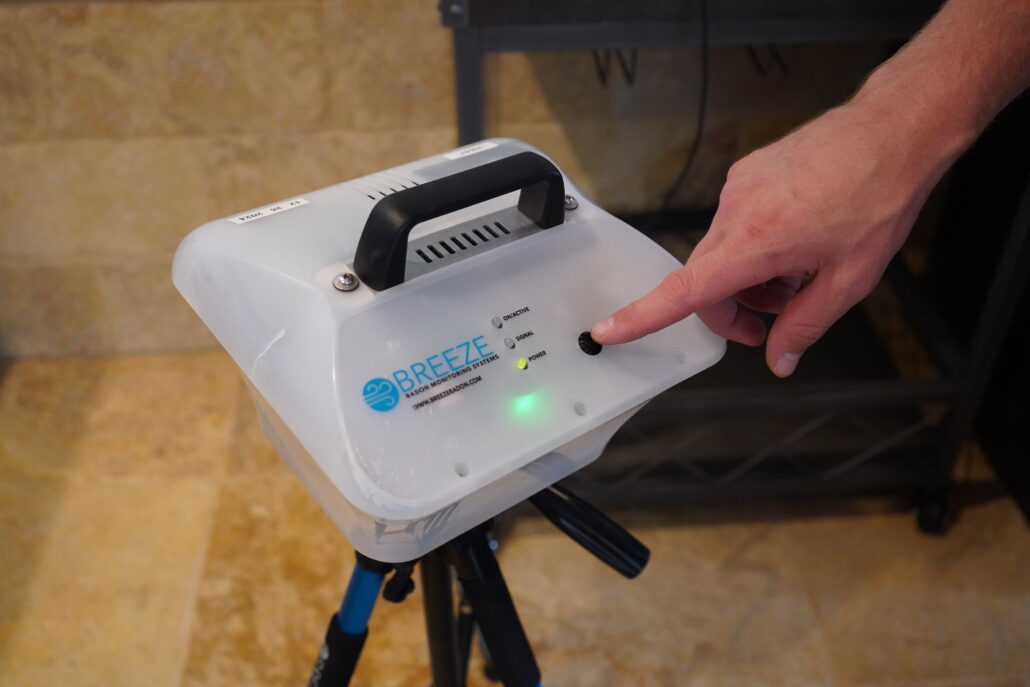
Est. Reading Time: 3-4 minutes
Written by Jake Miller, Licensed Home Inspector

Radon – What is it and how did it get in my home?
Radon is an odorless, tasteless, and invisible naturally occurring gas that is found in all homes. Long term exposure to high levels of radon (>4 pCi/l) can lead to cancer risk. Because of this risk, it is recommended to test your home’s radon level every 2-5 years or whenever the home changes owners. We often recommend testing your home in different seasons as levels can fluctuate based on temperature and barometric pressure. Radon enters your home through minor cracks in your basement or through your sump pump system. Because of this, leading into the winter is a great time to test before the cold comes.
Why should I test in the fall?
When we test for radon in a home, closed home conditions are required. This means that all windows and doors must remain closed for a minimum of 60 hours; 12 prior to testing and throughout the 48 hours of testing. Because the temperature is changing, most families are closing up their homes to keep warm. For us here in Minnesota, we spend the majority of the year with our doors and windows closed due to the weather, with exposure rates generally higher during the colder months.
Seasonal Variations in Radon Testing
During the winter months a phenomenon called the “Stack Effect” can happen. This occurs when the temperature difference between the inside of the home (generally warmer) and the outside of the home (generally colder) causes the warmer air inside to be drawn up and out of the home. This pressure tends to draw more radon into the home through the basement. Testing in the fall will give you a baseline before the temperature turns cold and your furnace is running for longer periods, better equipping you to decide if a radon mitigation system should be installed.
What should I do next?
If your home has not been tested in the last 2-5 years or maybe never been tested, there are a few options for testing. There are long term home test kits available that any homeowner can set up and complete on their own. If you would like a more “rapid test”, I would recommend hiring a professional radon test. Marigold Home Inspections offers a 48 hour radon test which collects an air sample every 10 mins, giving you 288 samples over the testing period. Once the test is complete, if radon mitigation is recommended, it would be best to contact a licensed Radon Mitigation company such as Marigold Home Services.
Final Thoughts
Every home has radon present, it is only a matter of testing to know what that level is at and how to mitigate the issue. Fall is a perfect time to test for radon as closed conditions are easily made. If you are in need of a radon test or have any questions, please give us a call.
